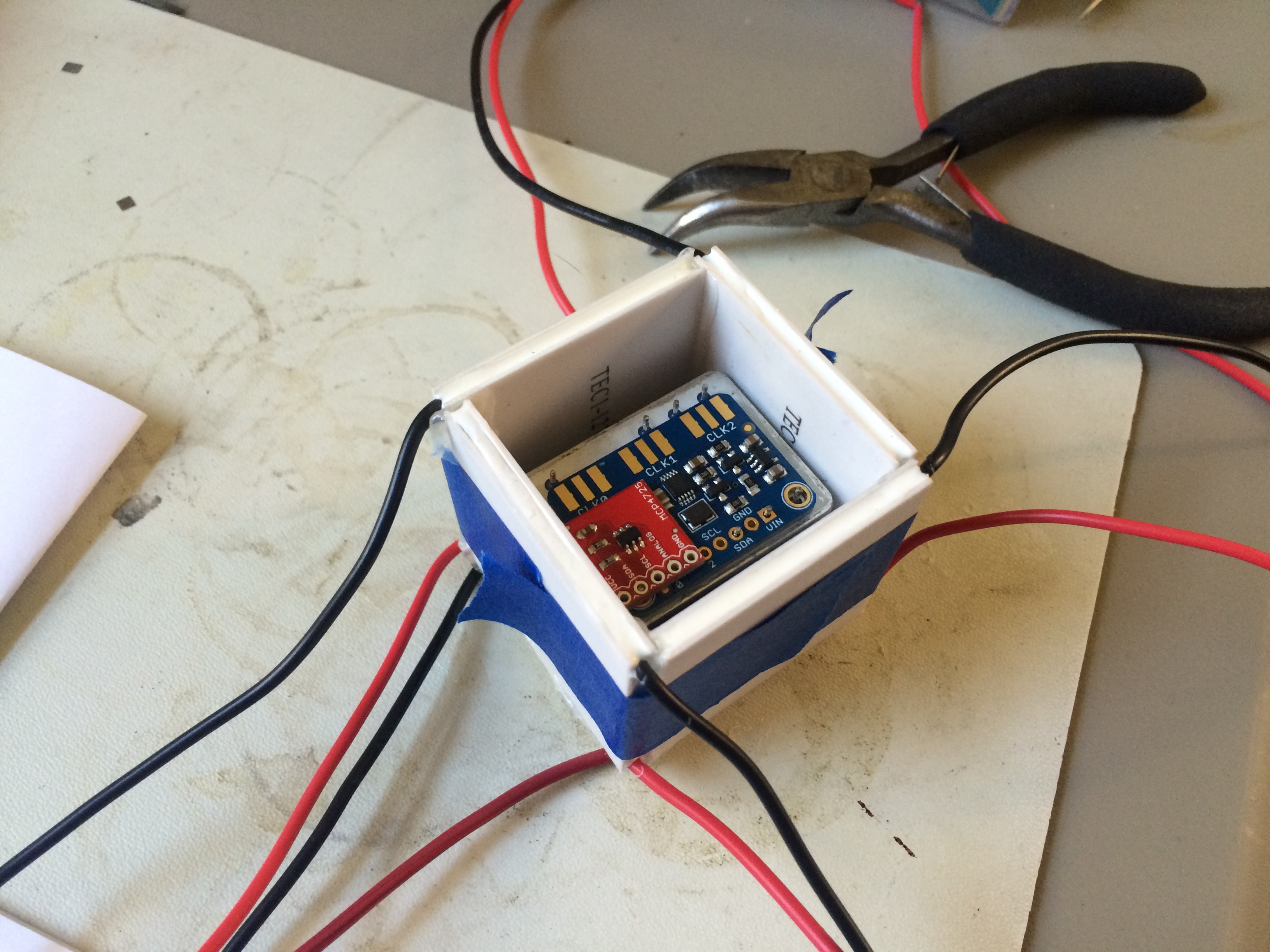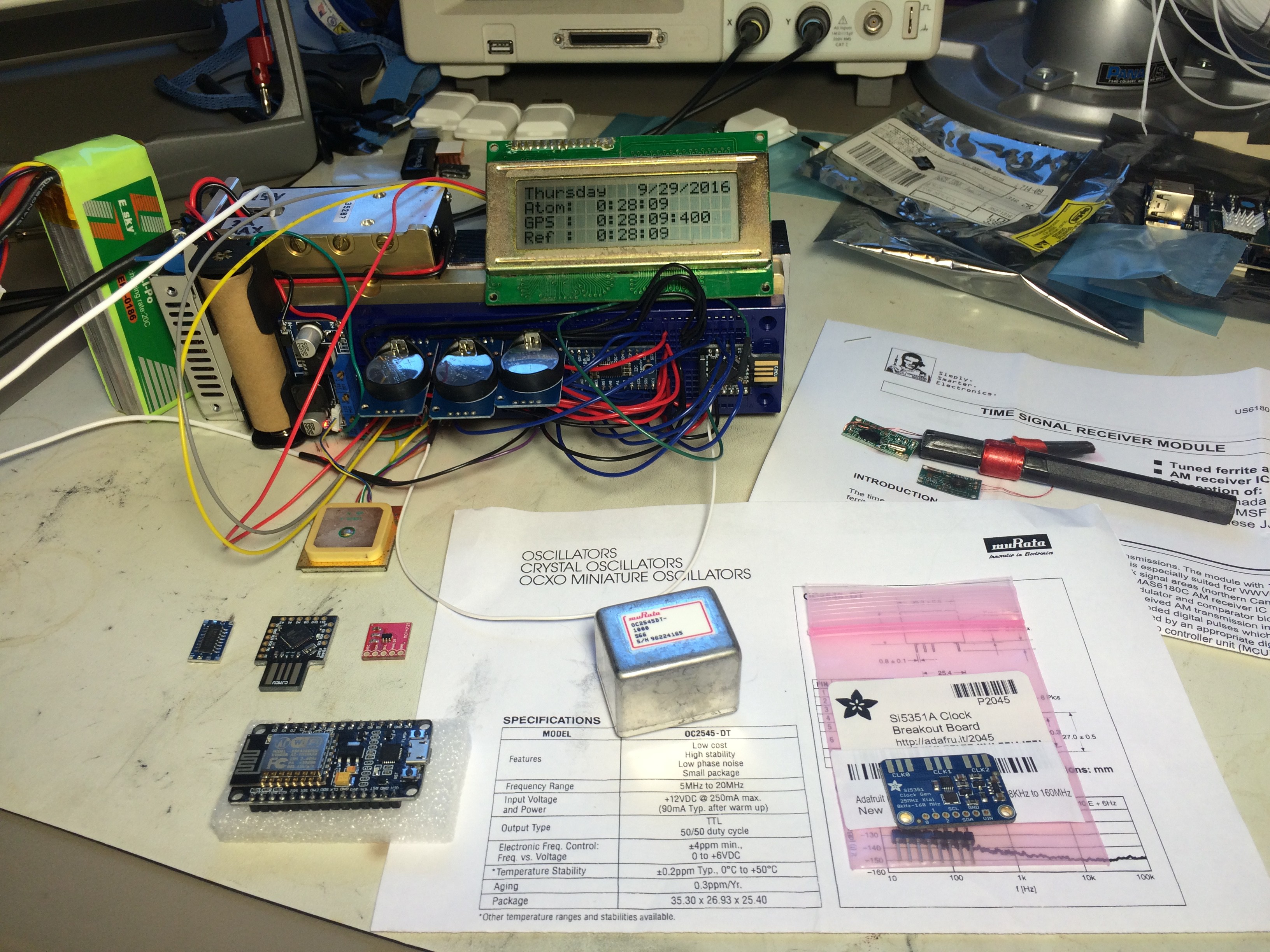-
Double Oven - Made from Peltiers... Only Peltiers...
09/29/2016 at 22:25 • 0 commentsSince the oscillator requires at least insulation to insure a stable temperature - I decided to go a bit overboard and build an oven from thermoelectric modules...
-
New parts on hand!
09/29/2016 at 00:59 • 0 comments -
Untethered
09/23/2016 at 04:41 • 0 commentsHere it is – Running standalone. The firmware is in progress, no “herding” is happening yet, but at least it turns on.
![]()
-
Condensation
09/23/2016 at 04:37 • 0 commentsTying everything together…
![]()
-
Too Much?
09/23/2016 at 04:35 • 0 commentsThen things started to get a bit out of hand… Adding in an I2C multiplexer board allowed for more than one RTC module. Since these have a hard coded I2C address you can normally only use one. I went for three – One tracking GPS time, another tracking the rubidium standard, and the last one as a control or reference clock – without compensation.
![]() Notice the new DC/DC converter – It allows input voltages from around 5-30V DC , currently wired into an old HP printer power supply @ 18.5V.
Notice the new DC/DC converter – It allows input voltages from around 5-30V DC , currently wired into an old HP printer power supply @ 18.5V. -
GPS is a Go
09/23/2016 at 04:33 • 0 commentsConveniently I have a GPS module with PPS output to make testing a bit easier. A LiFePo4 18650 cell provides battery backup to the GPS module, maintaining its internal RTC, and configuration data.
![]()
-
About Time!
09/23/2016 at 04:31 • 0 commentsAn arduino knock-off compares the relative delay between the pulse-per-second outputs from the RTC and the Rubidium standard. After some defined time divergence, the aging compensation register is updated to refine or maintain their overall agreement. Essentially herding the RTC so that its output stays within bounded agreement with the Rubidium standard.
This approach avoids editing the time registers directly, eliminating the possibility of corrupted writes.
![]()
-
Are we tracking?
09/23/2016 at 04:30 • 0 commentsThis brings us to the DS3231 Precision Real Time Clock Module:
![]()
![]()
The Aging Compensation Register of this RTC module allows for fine tuning of the internal (temp. compensated) crystal oscillator by adding or subtracting small capacitors to the oscillator circuit. “One LSB represents one small capacitor to be switched in or out of the capacitance array at the crystal pins.”
-
Keep it Cool
09/23/2016 at 04:26 • 0 commentsAs you can imagine some serious thermal management is required to run it continuously. Here is what I came up with, now directly powered from the lab supply:
![]()
The fan and heat sink came from a CNC mini-mill control board that was gathering dust – some hack sawing quickly transitioned to angle grinding, drilling and some orbital sanding. Black sharpie for show, and now it looks good while running at a nice stable temperature, with adjustable fan speed.
You can see the output on the oscilloscope – a short pulse, once each second. Usually referred to as PPS – Often available on GPS modules. Certainly interesting, but not much a of a feast for the senses, nor easily justifying the cost and effort to interested friends and family. Time to put it to use.
-
It's Alive!
09/23/2016 at 04:25 • 0 commentsHere it is ticking away connected to a bench power supply:
![]() Notice the power supply meters? Don’t worry – I’m using a larger DC-DC Buck/Boost converter to step it down for the 15V rail – the converter later failed while I was adjusting the output voltage however.
Notice the power supply meters? Don’t worry – I’m using a larger DC-DC Buck/Boost converter to step it down for the 15V rail – the converter later failed while I was adjusting the output voltage however.Regardless – 21.1V @ 1.08A = 22.8W! This thing is a power hog, especially during initial warm-up (something like 5 min).
 oneohm
oneohm









